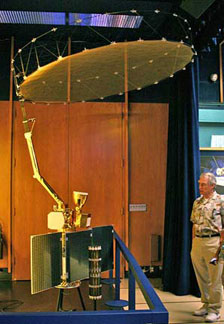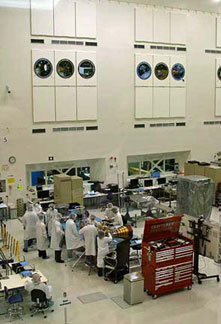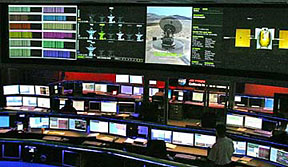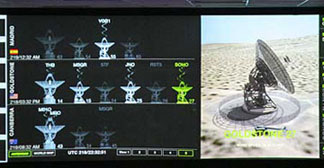Twice this
year, busloads of my eager students had the opportunity to tour JPL. It
was my pleasure to accompany them as scientific advisor and translator,
while Joan enjoyed revisiting the exciting place where her father worked
for many years.
As
virtually everyone on this planet knows, JPL is the world leader in
unmanned space exploration. Who can forget last year’s thrilling “Seven
Minutes of Terror” as Curiosity landed spectacularly on Mars?
JPL’s resume includes 113 major space missions: 68 are completed, 34 are currently active, and 11 are in development. JPL’s
missions have explored every planet, traveled farther, survived longer,
and discovered more than all other Solar System missions combined. Its
leadership is demonstrated by its Red Planet track record: over 2/3rds
of JPL Mars missions have been successful, while over 2/3rds of all
other Mars missions have failed completely. JPL attempts the greatest
challenges and achieves the greatest success.
JPL can
trace its history to the 1930’s when a few Caltech students began
experimenting with rockets. After one trial resulted in a particularly
nasty explosion, the administration “suggested” they find an off-campus
launch site. (Exploding things was still a popular student activity in
my day, and I got the same “suggestion.”) Wartime brought U.S.
Army sponsorship and the official establishment of the Jet Propulsion
Laboratory in 1944, located in the San Gabriel Mountains 7 miles from
campus. NASA was formed in 1958 and JPL became its only private-sector
research and technology center. While entirely funded by the U.S.
Government, JPL remains part of Caltech.

JPL tours
are a combination of topical exhibits and old favorites, including
replicas of Explorer, Cassini, Voyager, and three generations of
ever-larger Mars rovers: Sojourner, Opportunity, and Curiosity. In the
picture on the left, I’m trying to figure out how the small cylinder at
the bottom unfolds into the large antenna at the top.
Explorer 1,
launched by JPL in 1958, was America’s first satellite and our answer
to Sputnik. Explorer was also the first satellite to advance science,
discovering the Van Allen Radiation Belts that surround Earth and
protect our atmosphere from the solar wind.
JPL just
celebrated the 9th anniversary of the Cassini mission, which is still
exploring Saturn, its rings, and its methane-shrouded moon Titan. Titan
is the only other body in the Solar System with an abundance of organic
compounds, and the only moon with an atmosphere. Some say Titan may have
10 to 100 times more oil and gas than Earth.
After flying for 36 years, Voyagers 1 is nearly 12 billion miles from Earth (See Voyager Newsletter).
JPL has just announced that Voyager 1 found the “edge of our Solar
System”, where the solar wind wanes and the interstellar wind becomes
dominant. Voyager 1 is the first manmade craft to explore beyond our
Solar System. Even at the speed of light, Voyager’s radio signals take
17 hours to reach Earth.

The most
topical exhibit is the Spacecraft Assembly Building, site of the final
construction of upcoming missions. About a third of the assembly room is
shown on the right. The emblems on the walls symbolize past missions.
Here, JPL’ers in clean-room attire are assembling SMAP and RapidScat,
two missions to study our home planet.
SMAP will
measure soil moisture and freeze/thaw conditions across Earth’s entire
surface to better understand our global water cycle. RapidScat will
measure wind speed and direction above our oceans for weather and
hurricane forecasting and monitoring. Hopefully these missions will have
more appealing names before they launch in 2014.

The final
tour highlight was JPL Mission Control. The walls of this darkened room
are covered with automated displays. Mission “aces,” sitting behind
row-after-row of computer screens, manage communications with all U.S.
unmanned space missions.
 This
is the nerve center of JPL’s Deep Space Network, a global array of 15
giant radio antennae, several almost as large as a football field. With
Voyager 1 and 2 transmitting with only 23 watts from 12 billion miles
away, detecting their feeble signals pushes the Network to its limits. This
is the nerve center of JPL’s Deep Space Network, a global array of 15
giant radio antennae, several almost as large as a football field. With
Voyager 1 and 2 transmitting with only 23 watts from 12 billion miles
away, detecting their feeble signals pushes the Network to its limits.
It was very gratifying to see the epitome of “rocket science” — the best of the best that human ingenuity can achieve.
Best Regards,
Robert
September 23, 2013
Note: Previous newsletters can be found on my website
|